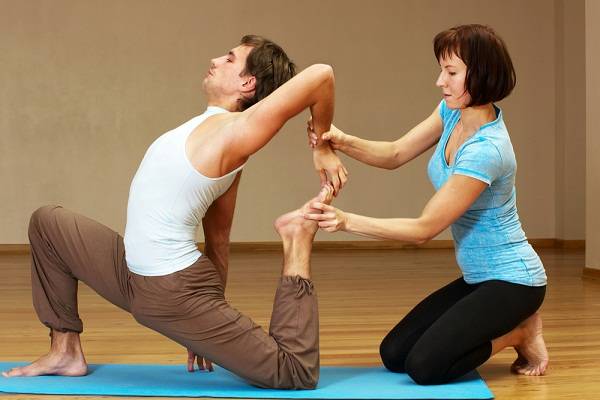Is yoga really a dangerous practice? A recent article in The New York Times, discussed an overwhelming phenomenon happening with yoga related injuries, ranging from degenerative disorders of the shoulders and hips, to headaches, neck and spine injuries, and even strokes. Can this be true?
As with any type of physical practice, whether it be CrossFit, weightlifting or kettlebell training, it is always important to be safe and smart. The practice of yoga when done correctly under an experienced teacher, has also been used for many years to successfully treat and rehabilitate many musculoskeletal issues, shoulder and spinal injuries, back pain, sciatica, and pregnancy induced conditions. Follow these 6 easy tips for an injury free yoga practice.
1. Set Yourself Up for Success
Stock up on the essential props you would need for a class. While most yoga studios have props and supplies on hand, it is best if you have your own. Get a great mat that works for your style of practice and your body. You might also want to get a set of blocks, a strap, and a blanket. Be sure to start with a series of yoga classes that specifically address beginners needs.
2. Listen to your Body
Your body has an intuitive way of telling you when poses are not serving you. When you practice yoga in a class setting it is important to not push past the limits of your body. If you feel out of breath, in pain, sense an electrical sensation, or strain, you’re pushing way too hard. Always take time out to rest and reset your breath in child’s pose.
3. Go at Your Own Pace
Start slow and take it easy with your first few classes. If it is helpful find a spot in he back of the room so you can find your own pace and flow. Some new students may find it beneficial to place themselves near and area where they can see the teacher demonstrate certain poses. If you are starting a vinyasa yoga practice it can also be wise to skip some of the vinyasas until you build you stamina for a more vigorous practice.
4. Be Smart
When embarking on any new fitness venture it is important to do your research, be informed, and take your time. Invest in a few books or magazines to learn more about yoga and what style might suit you best.
5. Find a Qualified and Experienced Teacher

Finding a yoga teacher that is experienced and qualified is just a click away. Yoga Alliance provides an online National Yoga Teachers’ Registry that lists teachers that meets minimum training standards. If you have existing injuries or other limitations discuss these with the teacher before the start of class.
If you are a beginner or if you have any known injuries or limitations, the poses you should avoid include; headstand, plow pose, shoulderstand, and any deep poses that target sensitive shoulders and knees.






